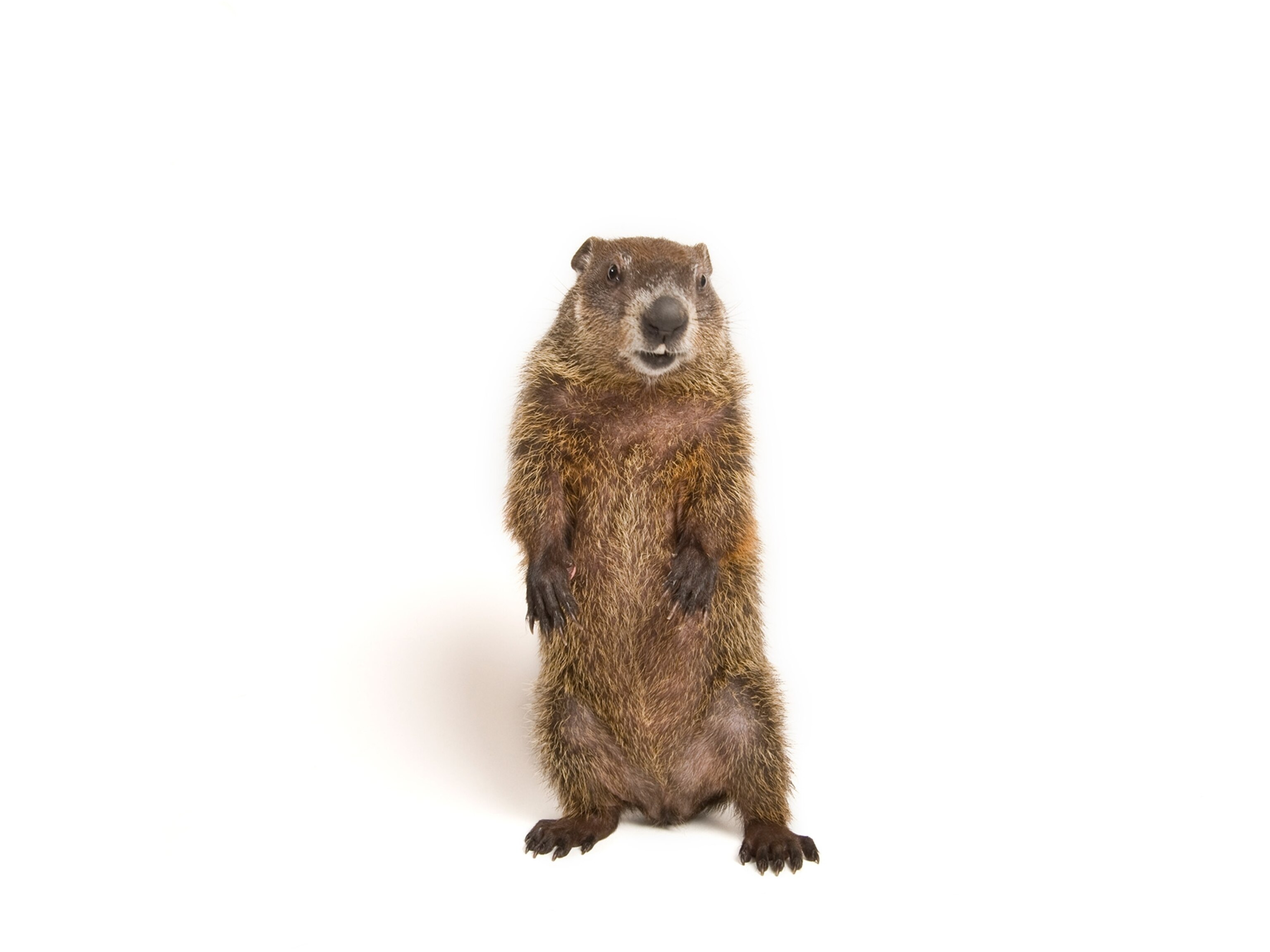
Groundhogs Aren't Looking for Their Shadow—They're Scoping Out the Opposite Sex
The Groundhog Day tradition may have started because there are no hedgehogs in Pennsylvania.
Updated February 2.
It’s déjà vu all over again. On the morning of February 2, a groundhog (Marmota monax, if you please) named Phil poked his head out of his burrow in Punxsutawney, Pennsylvania, and looked around, as he has for the past 128 years. Phil scanned the ground for his shadow—the telltale clue to whether winter would linger or be displaced by an early spring.
Phil saw his shadow. Brace yourself for six more weeks of winter.
Despite living in a hole, Phil is remarkably tech-savvy; he has all four feet squarely planted in the digital age. "You can start the Twitter hashtag #sixmoreweeksofwinter," he reportedly said.
But is Phil—or any groundhog, for that matter—really acting as the Oracle of Spring when he pops out of his hole? Not quite, it turns out.
Many male groundhogs do come out of their burrow on Groundhog Day, but not to see their shadow, said Stam Zervanos, emeritus professor of biology at Penn State Berks, in Reading.
“At this time of year, males emerge from their burrows to start searching for the females,” he explained. “The females come out probably seven days later and stay just outside of their burrow or maybe just inside their burrow.” After the males determine where the females are, both sexes “go back to their winter burrows and spend a little more time in hibernation.
“In March, they all emerge together, and that’s when mating occurs,” he said. “The males know exactly where the females are, [so] mating can occur very rapidly.”
Where did the idea of the groundhog as winter weatherman originate?
It’s European in origin, says Zervanos. Groundhog Day is related to Candlemas, a mid-winter Germanic holiday that had a hedgehog as its weather forecaster. When German-speaking immigrants came to Pennsylvania, the tradition came with them.
These immigrants, the Pennsylvania Dutch, may have picked groundhogs as their new holiday mascot because they saw them emerge around Candlemas. But there was also a more practical reason to find a new representative from the animal kingdom.
“We don’t have hedgehogs in Punxsutawney,” said Katie Donald, executive director of the Groundhog Club, which celebrates its 129th Groundhog Day this year.
The mission of the club, which holds a Groundhog Ball and sells memorabilia like towels emblazoned with the words “6 more weeks of winter,” is to protect and perpetuate the legend of Punxsutawney Phil. “The only true weather forecasting groundhog,” the club’s website says of its favorite native son. “The others are imposters.”
Meet Phil
Phil isn’t just unusual because he made a cameo appearance in a Bill Murray movie; he lives a life a wild groundhog can only dream of.
For one thing, Phil doesn’t really come out of hibernation on Groundhog Day to look for a mate, because he doesn’t hibernate at all. According to Donald, Phil doesn’t need to hibernate because he lives in a man-made, temperature-controlled burrow at Barclay Square in downtown Punxsutawney.
His burrow (should you care to send him a note, the address is 301 East Mahoning Street, Punxsutawney, PA 15767) is connected to the Punxsutawney Memorial Library by a glass window so that visitors can see Phil and his “wife” Phillis.
Although the pair make a cute tourist attraction, adult groundhogs don’t normally live together. “They can get a little aggressive [with] each other if one comes too close to their burrow,” said Zervanos.
Most groundhogs leave their mother when they are a few weeks to a few months old. That’s when they dig their own burrows, where they live alone for the rest of their lives, except when they mate and rear their young.
So how many groundhogs have played the role of “Phil” since Punxsutawney’s first Groundhog Day in 1887? The Groundhog Club isn’t telling.
“There’s only been one Phil,” Donald maintains. “Every year [the club] has the groundhog picnic in the late summer or early fall, and at this picnic he drinks ‘the elixir of life.’” The elixir, which grants Phil seven additional years of life with each sip, is made with fruit, vegetables, and strawberry Kool-Aid.
Who knew the Fountain of Youth was strawberry flavored?
RELATED




